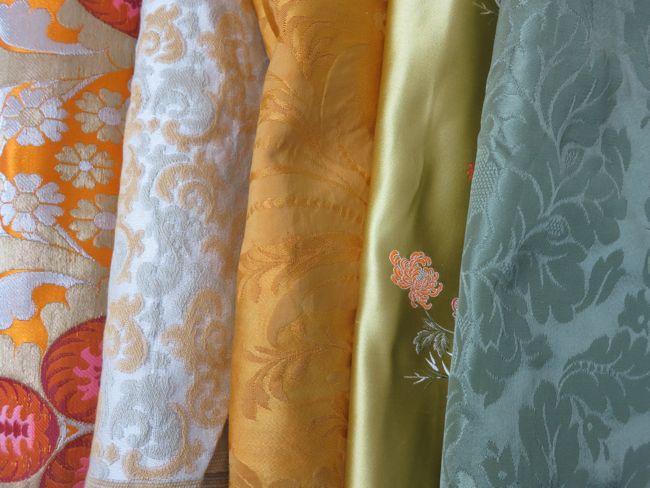Jacquard looms have revolutionized the textile industry by allowing for the creation of intricate and elaborate fabric patterns. These looms, named after their inventor Joseph-Marie Jacquard, use a system of punched cards to control the weaving process. This article explores the history and mechanics of Jacquard looms and their impact on the world of textiles.
The History of Jacquard Looms: Revolutionizing Fabric Production
The invention of Jacquard looms in the early 19th century revolutionized fabric production and had a profound impact on the textile industry. These looms were named after their creator, Joseph-Marie Jacquard, a French weaver and inventor. Prior to the Jacquard loom, fabric production was a labor-intensive process that required skilled weavers to manually control the pattern of the fabric. However, with the introduction of the Jacquard loom, this process became automated. The loom used a series of punched cards to control the weaving pattern, allowing for intricate and complex designs to be produced with ease. This innovation greatly increased the efficiency and productivity of fabric production, leading to the mass production of textiles and the democratization of fashion.
How Jacquard Looms Work: Unraveling the Intricate Mechanisms

Jacquard looms are intricate machines that revolutionized the textile industry. These looms use a system of punched cards to control the weaving process, allowing for the creation of complex and detailed patterns. The punched cards are fed into the loom, which then interprets the pattern and guides the threads accordingly. This mechanism enables weavers to produce intricate designs with ease, as the loom automates the process of selecting and lifting the appropriate threads. The Jacquard loom’s ability to weave intricate patterns quickly and accurately made it a game-changer in the textile industry, paving the way for the mass production of intricate fabrics.
From Simple to Elaborate: Exploring the Range of Fabric Patterns
Fabric patterns come in a wide range of styles, from simple to elaborate. Simple patterns often feature basic geometric shapes or repetitive motifs, making them versatile and easy to incorporate into various design schemes. These patterns are perfect for those who prefer a minimalist or modern aesthetic. On the other end of the spectrum, elaborate patterns can be intricate and detailed, showcasing complex designs and motifs. These patterns are often seen in traditional or vintage-inspired designs, adding a touch of elegance and sophistication to any space. Whether you prefer simplicity or intricacy, there is a fabric pattern out there to suit your personal style and design preferences.
The Impact of Jacquard Looms on the Textile Industry: A Game-Changer
The invention of Jacquard looms in the early 19th century revolutionized the textile industry. These looms, named after their creator Joseph-Marie Jacquard, introduced a new level of automation and efficiency to the production of textiles. The key innovation of the Jacquard loom was the use of punched cards to control the weaving process. This allowed for intricate and complex patterns to be woven with ease, eliminating the need for manual labor and increasing productivity. The impact of Jacquard looms on the textile industry was immense, leading to a significant reduction in production time and costs, and ultimately transforming the industry into a more sophisticated and profitable sector.
Modern Applications of Jacquard Looms: Beyond Traditional Fabrics
In recent years, the use of Jacquard looms has expanded beyond the production of traditional fabrics. These versatile machines are now being utilized in various industries to create intricate patterns and designs on a wide range of materials. One notable application is in the field of interior design, where Jacquard looms are used to weave intricate patterns on curtains, upholstery, and wall coverings. Additionally, the fashion industry has embraced the use of Jacquard looms to create unique and eye-catching designs on clothing and accessories. The technology has also found its way into the automotive industry, where it is used to create custom upholstery and interior detailing. With its ability to produce complex patterns and designs, the modern applications of Jacquard looms are truly limitless.
The Future of Jacquard Looms: Innovations and Advancements in Fabric Design
Jacquard looms have come a long way since their invention in the early 19th century. These looms revolutionized the textile industry by allowing intricate patterns to be woven into fabric. However, the future of Jacquard looms holds even more exciting possibilities. Innovations in technology have made it possible to create fabrics with embedded sensors and smart capabilities. This opens up a whole new world of possibilities for fabric design, allowing for interactive and responsive textiles. Imagine a fabric that can change color or pattern with a simple touch or a garment that can monitor your heart rate and adjust its temperature accordingly. The future of Jacquard looms is undoubtedly bright, with endless opportunities for creativity and functionality.
Conclusion
In conclusion, Jacquard looms have revolutionized the textile industry by allowing for the creation of intricate and elaborate fabric patterns. These looms have greatly increased the efficiency and speed of production, making it possible to create complex designs that were once only achievable through manual labor. With the continued advancements in technology, it is likely that Jacquard looms will continue to play a significant role in the future of fabric production.
What are Jacquard looms?
Jacquard looms are mechanical looms that use a series of punched cards to control the weaving of intricate fabric patterns.
How do Jacquard looms work?
Jacquard looms work by using a system of punched cards that are read by the loom’s machinery. Each card corresponds to a specific row of the fabric pattern, and the presence or absence of holes in the card determines which warp threads are raised or lowered during the weaving process.
What types of fabric patterns can be created with Jacquard looms?
Jacquard looms can create a wide variety of fabric patterns, including intricate designs, geometric shapes, and even realistic images. The possibilities are virtually endless.
What are the advantages of using Jacquard looms?
Using Jacquard looms allows for the creation of highly detailed and complex fabric patterns that would be difficult or impossible to achieve with traditional hand weaving techniques. It also allows for faster and more efficient production of these patterns.
Are Jacquard looms still used today?
Yes, Jacquard looms are still used today in the textile industry. While modern technology has introduced more advanced weaving methods, Jacquard looms continue to be valued for their ability to create intricate and unique fabric patterns.
Can Jacquard looms be used for other purposes besides weaving fabric?
Yes, Jacquard looms can also be used for other purposes besides weaving fabric. They have been adapted for use in the production of carpets, tapestries, and even computer punch cards in the early days of computing.

